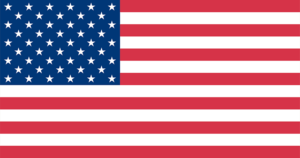Rewind back to January 2013. I climbed into the sweltering heat of Trinidad, yanked off my sweatshirt, and peered into a blinding sunlight the likes of which I had not seen in a long while. The taxi driver pulled up to the curb and began loading my baggage into the trunk. “Hop in de front chile,” she invited. I opened the door beside me- on the right hand side of the car- and was surprised to see a steering wheel attached to the dashboard. “Ya not drivin dis time,” she laughed and directed me to the seat on the opposite side. Six months later I return to Maryland, USA and find that I am now struggling to remember the correct driving procedures. A left turn through an intersection seems all wrong. I walk on the opposite side of the sidewalk, try to climb up a down escalator, and hold on to the left side of a railing, bumping into people walking in the opposite direction.
The racial makeup of Trinidad and Tobago is vastly different from that of the United States. My first shock upon arriving at the airport in Atlanta, Georgia was caused by the racial uniformity of the people milling about the airport. Trinidad and Tobago is a culture made up of Afro-Trinidadians (of African descent) and Indo-Trinidadians (of Indian descent). On the rare occasion I would run into a Caucasian Trinidadian, but generally they had roots in Europe and it was not often that I met a Caucasian Trinidadian who lived in Trinidad (many of them were only there to attend UWI).
While the United States refers to itself as the ‘melting pot’, many areas are very concentrated racially. The city in which I returned to was another shock to my senses. After spending months in the company of mainly Afro-Trinidadians and students from other Caribbean backgrounds, I was suddenly thrust back into a city that is demographically 90% white and only 3% black— a complete feeling of vertigo!
The USA has a rich culture to offer, if we look hard enough. Trinidad and Tobago has a rich culture, which we can see and feel without having to actively seek it out. I miss seeing houses of a million different colors, shapes, and sizes. I miss the open air shacks, the dorms with windows that never close, and the strange shades of colors chosen for each part of a house- none of which matched the others. Flying over the USA, I was again reminded of the feelings of conformity to one standard as I peered through the plane windows at the suburban homes, all following one color scheme.
I miss walking to the Tunapuna market for food on a weekend morning, hearing music blasting whether it was 8 AM or 8 PM, soca blaring from the speakers of cars or steel pan drums beating out a tune from the nearest church. Trinidad and Tobago is a proud culture, driven by their love of music and dance. Soca music draws in armfuls of instruments that dance together to make a joyous tune to which you can shake every muscle in your body! Back in my city at home, I hear music blare out the car windows of the occasional teenage driver, but shopping malls and grocery stores do not take part in the tradition of music. Here, music scares away the older customers rather than inviting them to shimmy in the doors.
Nevertheless, I am ecstatic to be home to the delicious food. Having a food allergy, it is a relief to be back in the USA where I can find any food imaginable at the grocery store… back to a culture that takes pride in eating as much as possible! I also have taken for granted, in the course of my life, the ease with which I have access to goods and services. In Trinidad and Tobago, I had to travel several towns over, to a small mall in the north corner of the capital city, in order to find a store that would fix my camera. In the USA, it is a simple matter of of driving down the road and there are innumerable shops available to help you with every need. A chain like Wal-Mart does not exist in Trinidad and Tobago. Instead, there are seven separate stores you must visit in order to achieve the same shopping wholeness that one trip to Wal-Mart allows us.
At the end of the day, the most tangible differences are the accents and the public transportation. The suburban area in which I reside nearly lacks all public transport, the only option being a public bus that drives through a few times a day. Trinidad and Tobago relied on the maxi-taxis, wild buses jam-packed with people, driving on several routes for a mere $3 TT (under $0.50 USD). Nothing can compare to the “sing-songy” lulling accent of the Trinis, welcoming you aboard a taxi or into a shop.
As I adjust to the USA, my heart longs again for the lush forests, the clear water, and the rich people of Trinidad and Tobago.



